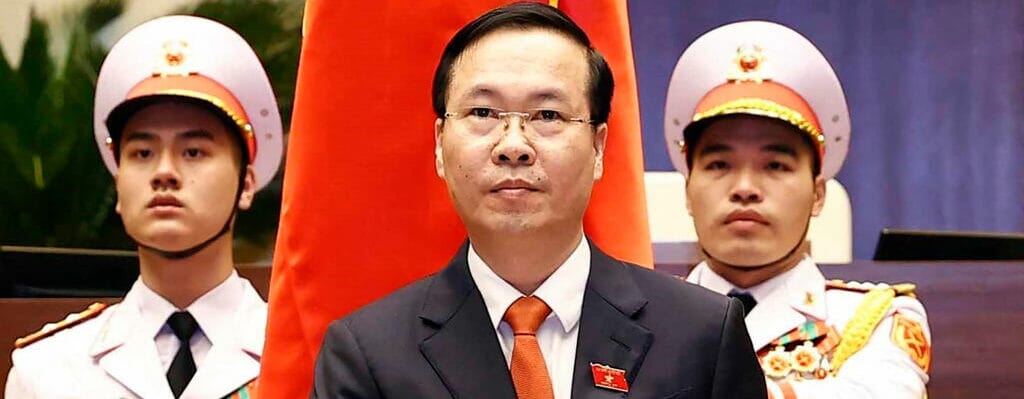News
New hopes for old projects? China gears up rail efforts with Kazakhstan

China seeks easier trade access to European markets by developing its rail network with Kazakhstan and trialing the Middle Corridor.
Over the last few months, rail transport between Kazakhstan and China has been actively developing. Chinese railroads in Kazakhstan are not only laying the groundwork for long-term ties between the two countries, but these tracks have also been facilitating the opening up of channels to Europe that bypass Russia. The Russian conflict in Ukraine forced many countries, particularly those neighbouring Russia, such as China and Kazakhstan, to develop their own contingency plans, including the development of alternative transport routes.
A flurry of rail plots and plans
A recent stream of bilateral visits to China by a delegation from Kazakh Temir Zholy (KTZ), the state railway operator of Kazakhstan, emphasised the importance of enhancing and upgrading bilateral rail freight transport facilities. In March, KTZ visited its counterpart in the Chinese city of Xi’an. Both sides agreed on the construction of a terminal on the territory of the dry port in Xi’an. This port already receives 40 percent of Kazakh imports, according to the press service of KTZ.
Soon after, KTZ went to Urumqi, the capital of the Xinjiang region in China, and conducted several other agreements with the China Railway Urumqi Group Co., Ltd., the state-owned railway operator of the rail network within Xinjiang. The key points agreed upon were the upgrade of tracks on the railroads of Bakhty-Ayagoz and Dostyk-Moiynty with the possible construction of an additional Kazakh terminal in Urumqi. The KTZ press release also reported on the construction of a second line of railway tracks on the Jinhe-Alashankou railroad.
At the same time, China has been testing out alternative routes to Europe via Kazakhstan. The Trans-Caspian corridor, more commonly referred to as the Middle Corridor, has been seen as a desired alternative. The Middle Corridor is a multimodal transport project that seeks to connect Turkey to China via Georgia, Azerbaijan, and the Caspian Sea through either Kazakhstan or Turkmenistan, Uzbekistan, and Kyrgyzstan. Starting back in the 1990s the project has long been delayed due to logistical and security issues. Despite this, the participating states remain interested in seeing it through, now more than ever.
The major achievements of the Middle Corridor so far include the Trans-Kazakhstan railroad and the Baku-Tbilisi-Kars (BTK) railway, which became operational in 2017. In March this year, KTZ sent the first Trans-Caspian China-Europe train from Jiaozhou, in eastern China, to the port of Koper, in Slovenia. The train was loaded with new electric vehicles and covered the 13,000-kilometer route in 45 days. This was the first time that this route had been tested. In a journey of rail-sea-rail, the train left Jiaozhou and crossed the north of China entering Kazakhstan via the Khorgos border crossing and then reaching Altynkol. The cargo was offloaded and transshipped across from the port of Aktau in Kazakhstan to the seaport of Alat in Azerbaijan. The seaport of Alat was opened for traffic in 2018 with an annual capacity of 15 million tons. Once in Azerbaijan, the cargo was then carried through the Georgian border by rail along the Beyuk‐Kesik line to the Black Sea Port of Poti. From there, the load was carried onward via rail to the Slovenian port of Koper via Turkey.
This first trip can be considered a test to find new routes that would avoid crossing the Black Sea. Despite being a shorter route, travelling via the Black Sea allows for much less capacity. Physical bottlenecks are also prevalent on this route. For starters, physical infrastructure development of the ailing Turkish rail system is needed if this corridor hopes to increase its volume of cargo and become a viable alternative.
Why is the Trans-Caspian route important for China?
For China, economic development is a key priority and the EU is a major export market. Providing more links between the two is envisioned in Beijing’s Belt and Road Initiative (BRI). The BRI was first proposed by President Xi Jinping in 2013 and is a large infrastructure project that aims to connect China with the rest of the world. On land, China aims to connect the country to Europe through a sprawling network of train tracks crisscrossing Central Asia. For Xi, Central Asia plays an important role in China’s outreach to European markets. The China-Central Asia summit that will take place in May this year is also indicative of growing ties, where railways would no doubt feature high on the agenda.
As part of the BRI, three transportation corridors have been launched between China and Europe. These corridors are called the east corridor, central corridor, and west corridor. The east and central corridors go through Russia and join with the Trans-Siberian railway network. The west corridor has multiple lines and traverses through Kazakhstan and stretches to Europe through Central Asia, with arms to Iran and Turkey. This west corridor bypasses Russia and is thus more attractive at this juncture to Europe. However, some sections in this corridor are still not well developed and require serious upgrades in infrastructure.
Moving rail cargo from China through Central Asia then to Russia and out to the EU had been a key route under the BRI, but the Russian invasion of Ukraine and waves of U.S. and EU sanctions have forced China to search for alternatives. During the pandemic, the northern rail network through Russia was the primary route for freight forwarders and cargo companies as an alternative to ocean transport. The reason for this was because ports had globally closed or limited their operations in an attempt to limit the spread of the COVID-19 virus. Since the Russia-Ukraine conflict, freight forwarders have been unable or unwilling to transport through Russia and the Black Sea.
Why is it important for Kazakhstan?
For Kazakhstan, there are obvious advantages. The most notable is the modernisation of its railroads and connecting to European markets. A major bottleneck to Kazakhstan’s economic development is the state of its transport systems. By virtue of its geography and the Soviet legacy, Kazakhstan has traditionally been dependent on the northern railway route via Russia to export its goods to world markets. Connecting with the Chinese rail network and also integrating with the railway line in the Middle Corridor can help Kazakhstan enjoy faster export growth volumes, sell its goods to European markets, and avoid dependence on a single route.
This railway push to Europe has also included efforts to harmonise logistic bottlenecks. In March, a memorandum was signed between Kazpost (the national postal service of Kazakhstan involved in tracking deliveries), WEA-Transport GmbH (from Germany, an authorised EU rail operator), and Huapengfei Company of China (an authorised Chinese national logistics operator). This agreement is designed to facilitate cross-border trade in the Eurasian space and organise an international logistics corridor for e-commerce. This is the first memorandum of trilateral cooperation between the national logistic operators of Kazakhstan, China, and the EU.
Prior to this meeting, in February 2023, the heads of the Chinese and Kazakh railways signed a supplementary agreement on the exchange of freight transport data. They also discussed railway port cooperation, strengthening infrastructure connectivity, and promoting the development of high-quality China-Europe trains and cross-border transportation, and promoting paperless transportation of international intermodal cargo.
From a geopolitical perspective, the implementation of the rail corridors can boost Kazakhstan’s multivector strategy. Kazakhstan can leverage its relationship with China to balance Russia and the West, without becoming a client state for any one of them. From this, Kazakhstan can emerge as a key East-West transit hub. But caution regarding the prevalence of Chinese infrastructure is warranted. In many cases Chinese railroads have dual-use potential and their development could be about more than just railways. Such investments provide ways for China to establish new institutions and connections that reflect and support Chinese interests.
Equally important is who stands to benefit the most from this arrangement. In the event of high congestion, Chinese goods destined for Europe would have priority over local deliveries. This can result in a severe backlog of goods stranded and can reduce local competition and loss of business for Kazakh traders. There is a compendium of examples in the past where freight delays at the Dostyk and Altynkol and Nur Zholy-Khorgos checkpoints between China and Kazakhstan have increased the costs of doing business. This has also been compounded by corruption in China-Kazakhstan customs, despite the efforts by Kazakhstan to implement a new IT system.
Conclusion
For the China-Kazakhstan railway network to be effective and smoothly operate with other regional rail routes, technical modernisation, better interaction between the countries, enhanced electronic data exchanges, and harmonisation of customs would need to be achieved first. For instance, cargoes cross several customs zones on the way to Europe, such as the China customs zone, the Eurasian Customs Union, and the European Union Customs Union (EUCU). The test run of the Middle Corridor is promising but its still a long way from becoming a viable commercial route to match the capacity and volumes that are carried along the transit corridor running through Russia. While a complete switch of corridors is not realistic at this point, both sides including Europe need to acknowledge that the logistical challenges and the skills needed to operate this line will take time to develop. Nevertheless, the test run and the renewed optimism are a start in the right direction.
This article was first published in The Diplomat.
Image credit: ABDUAZIZ MADYAROV/AFP via Getty Images
Newsletter signup

Intelligence delivered ingeniously
Helping key decision makers, make the right commercial decisions


